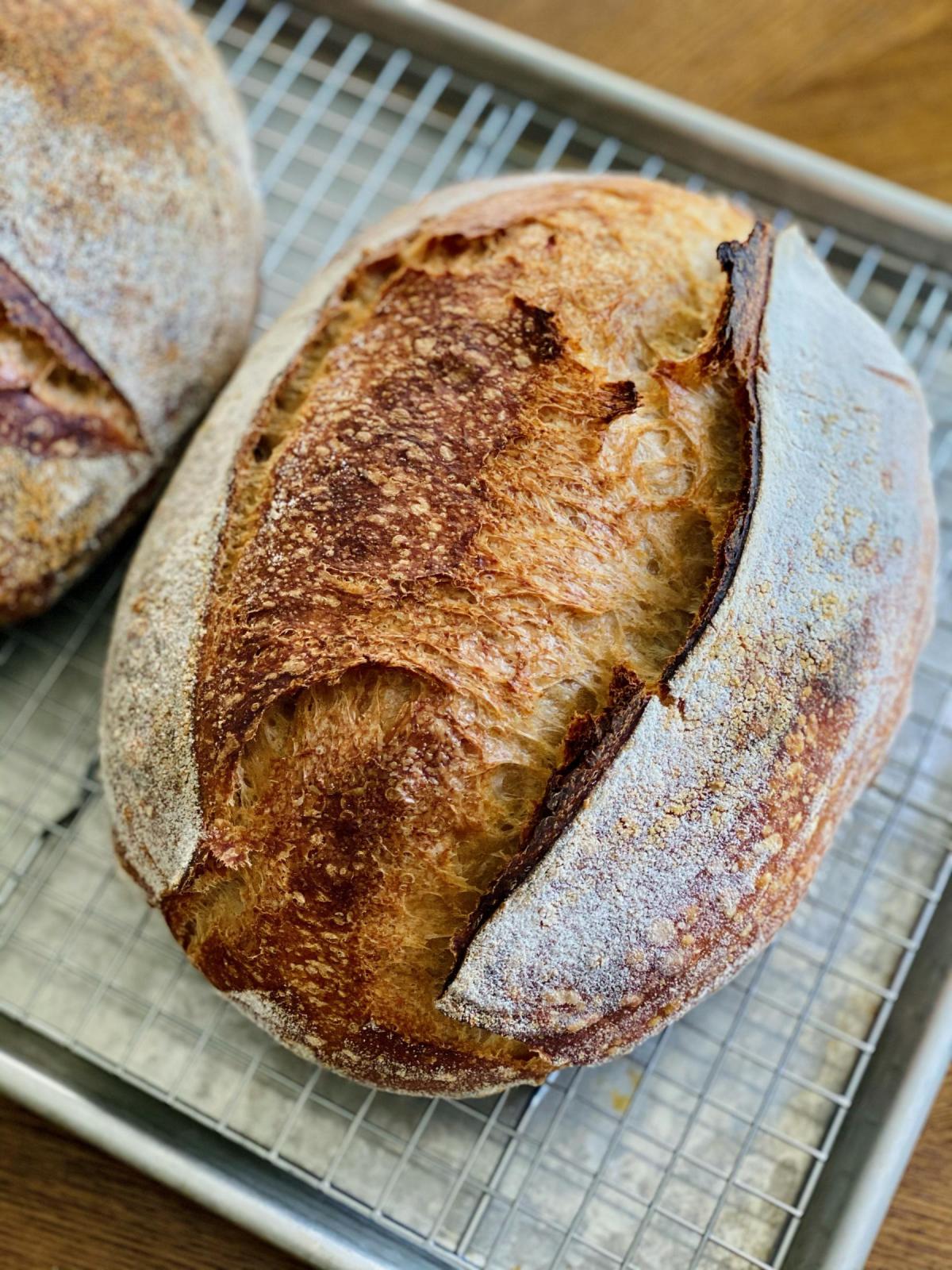Hi all:
I baked a couple of Tartine Country loaves today with a levain that was fed at 1:4:4 (25g starter (which is normally fed at 1:1:1) with 100g of flour and 100g of water). I've done this before and, interestingly, the loaves I get from a 1:4:4 levain are usually much smaller in size than the ones I've made with a levain fed at 1:1:1. Any idea why?
1:4:4 loaf is below.
Thanks!

Are you able to show crumb from each to compare, it might help you get the answers you’re looking for.
Off the top of my head, one thing I can think of is that the 1:1:1 levain would be ready much more quickly than the 1:4:4. Is it possible that the 1:4:4 wasn’t quite ready when you used it?
Benny
Thanks, Benny!
I figured that could be the case, because I waited around the same time (about 8 hours) to use the levain at different ratios. I think I'll wait closer to 10-12 hours for 1:4:4 next time.
Here are some comparison shots:
1:4:4 crumb
1:1:1 crumb
Actually both crumbs looks quite great to me. But for sure, higher ratio feeds take longer to reach peak at the same temperature from the same starter. When you used the 1:4:4 levain had it peaked and just started to lose its dome?
I used it just when it started to lose its dome, but I would say it was more on the "fluffy" stage. I should wait longer next time!
Took much feed makes for a weak starter. Enjoy!
Thanks phaz!
When you say "weak starter," do you mean it takes a longer time for the starter to fully ferment (meaning I would need to wait longer after my feed before using)?
My understanding of the difference between the 2 feeds is it comes down to dilution. In technical terms, the 1:1:1 has more microbes per volume (Tbs or cup or whatever size you are measuring) than 1:4:4.
I am a really visual person, and I sometimes need something simple I can visualize. Word pictures can help me grasp concepts, see if this works for you?
Picture 10 people getting into a kiddie pool vs the same 10 people getting into a big lap pool. The kiddie pool is your 1:1:1 feed or levain. Eventually the lap pool (the 1:4:4 mix) will fill up too, but it just takes more "people" (sourdough beasties) to fill it before it's ready. In both cases, the pool (starter build up or levain) needs to be full before it can do a good job when it gets added to the dough. If the levain pool isn't full (or at least nearly full), you end up diluting your beasties even further in the dough. They will go forth and multiply and eventually get their job done, but it will take a whole lot longer.
It's not a very technical image, but hopefully that helps a bit.
That actually makes a lot of sense. Thank you! I think I will try to stick with 1:1:1 (or close to)... I usually do higher ratios when I need to scale up for multiple loaves (like this time).
I consider weakness to be a low concentration of our little friends, which will slow things down. Enjoy!
Took much feed makes for a weak starter. Enjoy!
The only question which stands is which one you prefer?
Thanks Abe!
I think I prefer my loaves from 1:1:1 at this time, but I think I need to bake again from a 1:4:4 levain that's been fermented longer. Will report back!
Once the starter peaks and starts deflating, concentration of microorganisms is the same regardless of what the feed ratio was. But 1:1:1 reaches that states sooner than 1:4:4.
When fed 1:4:4 and given the same amount of time, concentration per unit of volume is much lower, and you further reduce it by mixing into dough. Bulking time in the dough needs to be extended accordingly.
So, longer starter peaking time = same bulking time, and same starter peaking time = longer bulk.